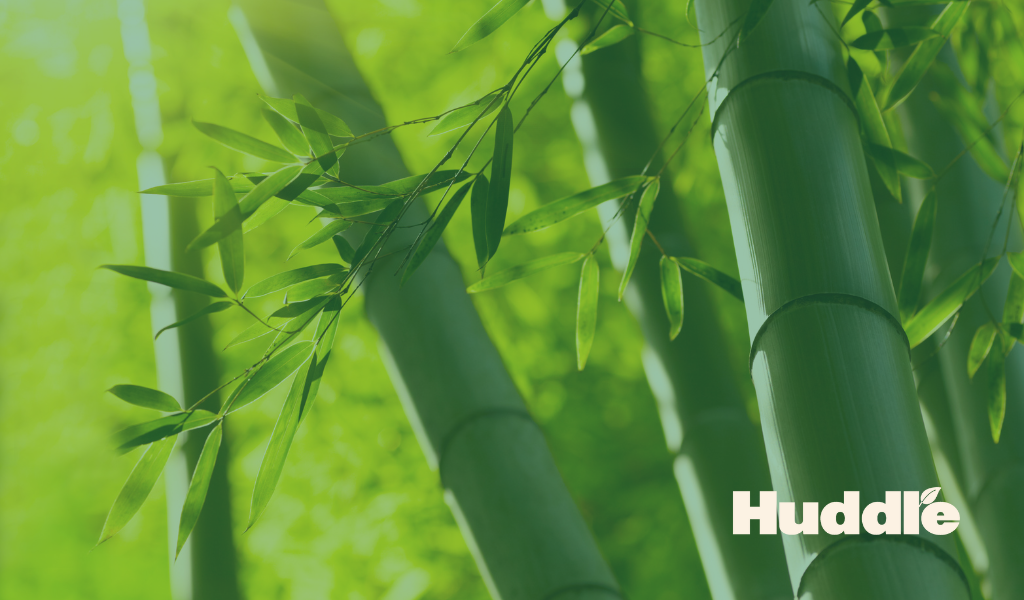
In a world grappling with environmental challenges, an unexpected hero emerges from the grass family: bamboo. This versatile plant is not just a favorite snack for pandas; it’s a powerhouse of sustainability that’s revolutionizing industries and offering hope for a greener future. From construction to textiles, bamboo is proving that it has the potential to be a game-changer as the event industry does our part in the fight against climate change and environmental degradation. Lets look at how using bamboo products in your event alongside other recycled material might be able to help you reach your sustainability goals.
Why Bamboo is a Sustainability Superstar
Rapid Growth and High Yield

Bamboo is one of the fastest-growing plants on Earth. Some species can grow up to 91 cm (36 inches) in a single day!
This rapid growth means bamboo can be harvested much more frequently than traditional timber, providing a renewable resource that can meet increasing global demand without contributing to deforestation.This is a particular concern for sustainable events, where temporary wooden constructions like booths and signage can make a surprising impact on your events carbon footprint.
Carbon Sequestration
Bamboo is a champion when it comes to absorbing carbon dioxide. It can sequester up to 12 tons of CO2 per hectare per year, making it an excellent tool in the fight against global warming. Bamboo forests act as carbon sinks, helping to mitigate the effects of greenhouse gas emissions.
Soil Protection and Water Conservation

The extensive root system of bamboo helps prevent soil erosion, a critical factor in maintaining healthy ecosystems. Additionally, bamboo requires significantly less water than many other crops, making it an ideal plant for sustainable agriculture in water-stressed regions.
Biodegradability
Unlike plastic and many synthetic materials, bamboo products are biodegradable. This means less waste in landfills and reduced pollution in our oceans and ecosystems. In particular for us it means a simpler waste management process, reducing landfill and helping keep your event environmentally friendly.
Versatility
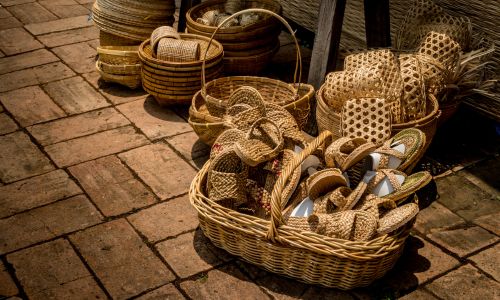
From construction materials to clothing fibers, bamboo can be used in an astonishing variety of applications. This versatility makes it a valuable resource for sustainable innovation across multiple industries.
Bamboo in Action: Global Sustainability Projects
Bamboo Housing in the Philippines
In the wake of natural disasters, the “Bamboo for Good” initiative is revolutionizing housing solutions in the Philippines. This project uses locally sourced bamboo to create durable, earthquake-resistant homes that are both affordable and sustainable. The initiative not only provides safe housing but also supports local bamboo farmers and reduces the carbon footprint associated with traditional construction materials.
Bamboo Bicycles in Ghana
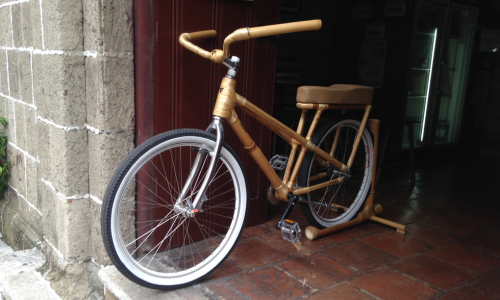
The Ghana Bamboo Bikes Initiative is tackling multiple challenges with one innovative solution. By manufacturing bicycles from bamboo, this project provides eco-friendly transportation, creates jobs for rural youth, and promotes the use of bamboo as a sustainable resource. These bikes are not only sturdy and lightweight but also have a significantly lower carbon footprint compared to metal bicycles.
Bamboo Textiles in China
The Chinese textile industry is increasingly turning to bamboo as a sustainable alternative to cotton and synthetic fibers. Bamboo fabric is naturally antibacterial, moisture-wicking, and incredibly soft. Companies like Bambro Textile Co. are leading the charge, producing everything from towels to bedding using bamboo fibers, significantly reducing water usage and chemical inputs compared to traditional textile production.
Bamboo Straws in Vietnam
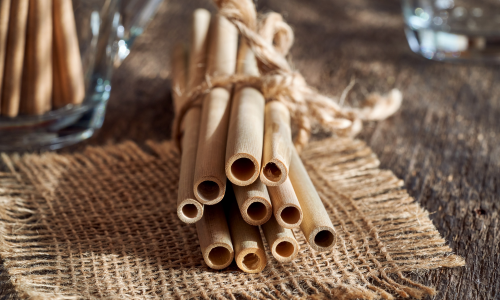
As the world moves away from single-use plastics, a company in Vietnam called Zero Waste Saigon is producing bamboo straws as an eco-friendly alternative. These straws are reusable, biodegradable, and support local bamboo farmers. The initiative has gained international attention, showcasing how simple bamboo products can have a global impact on reducing plastic waste.
Bamboo Reforestation in Indonesia
The Environmental Bamboo Foundation in Indonesia is spearheading efforts to reforest degraded lands with bamboo. This project not only helps to restore ecosystems but also provides sustainable livelihoods for local communities. The foundation’s work demonstrates bamboo’s potential in large-scale environmental restoration projects.
Bamboo Design in Bali
Some of our team are lucky enough to spend time in Bali, where they came across Ibuku, a dynamic team of designers, engineers and architects that are bringing bamboo construction into new, interesting and modern applications like hotels and event spaces. A particular favorite was The Arc, a series of bamboo arches spanning 19 meters at the Green School in Bali.
The Future of Bamboo: Challenges and Opportunities
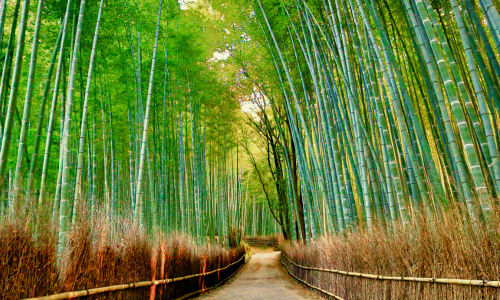
While bamboo offers immense potential, there are challenges to overcome. Sustainable harvesting practices must be implemented to prevent overexploitation and habitat destruction. Additionally, more research is needed to fully understand bamboo’s long-term environmental impacts and to develop more efficient processing techniques to ensure carbon emissions are minimized..
However, the opportunities far outweigh the challenges. As technology advances, we’re likely to see even more innovative uses for bamboo, from biodegradable packaging to advanced construction materials. Governments and organizations worldwide are increasingly recognizing bamboo’s potential, leading to more supportive policies and investment in bamboo-based solutions.
Conclusion: Embracing the Bamboo Revolution
The magic of bamboo lies not just in its remarkable properties but in its ability to offer sustainable solutions to some of our most pressing environmental challenges. From absorbing carbon to providing eco-friendly alternatives to plastic and timber, bamboo is proving to be a versatile ally in the fight against climate change and environmental degradation.
As we look to create a more sustainable future, bamboo stands tall as a symbol of hope and innovation. By embracing bamboo in our daily lives and supporting bamboo-based initiatives, we can all contribute to a greener, more sustainable planet. The bamboo revolution is here, and it’s offering us a path to a more sustainable world – one shoot at a time.